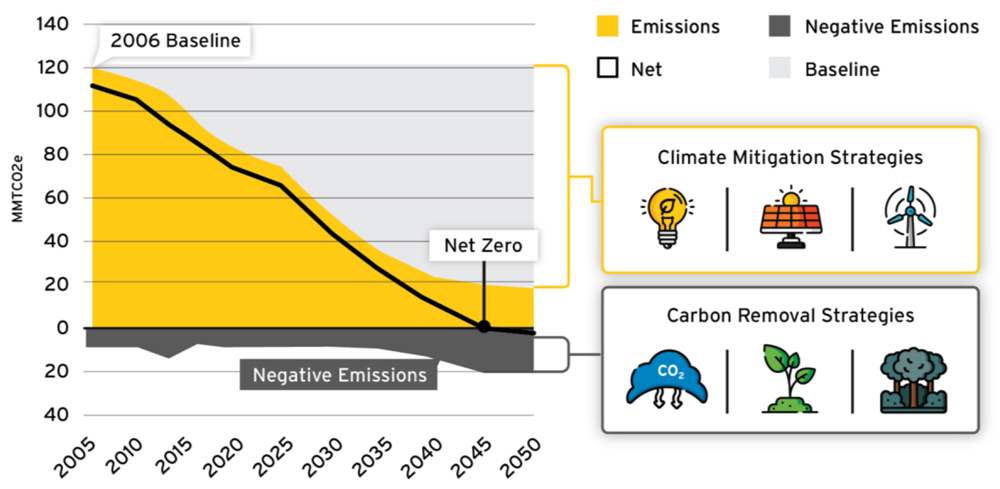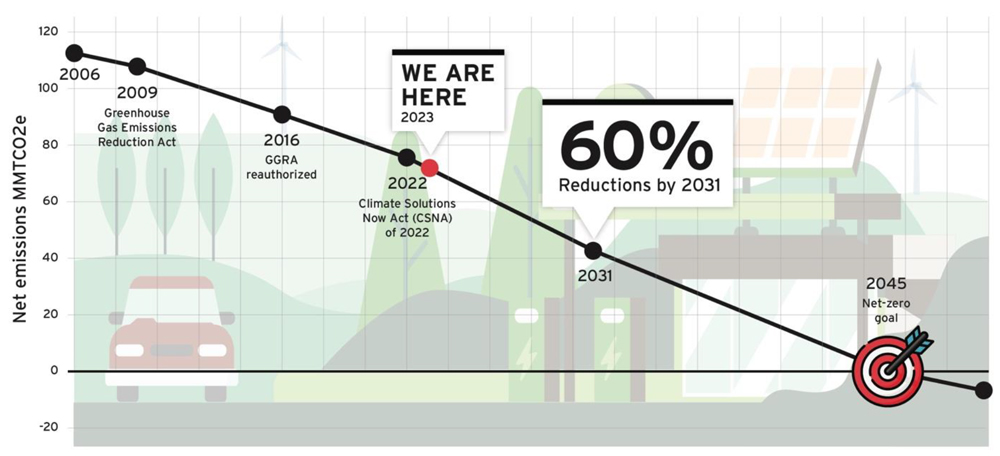PJM completed presenting its proposal to overhaul the capacity market, and stakeholders continued refining their own proposals, during the Critical Issue Fast Path (CIFP) process meeting last week.
Wrapping up a presentation that spanned multiple full-day meetings, PJM focused on its proposed changes to market power mitigation and fixed resource requirement (FRR) entities.
The proposed market power changes would create an explicit calculation of unit-specific Capacity Performance (CP) risk based on its parameters and reliability risk modeling. PJM’s Skyler Marzewski said the goal is to ensure that market sellers can fully represent the risks and costs of taking on a capacity obligation.
PJM’s package also would shift to using a forward-looking energy and ancillary services offset for the market seller offer cap (MSOC) and minimum offer price rule (MOPR). And the exemption that intermittent and storage resources currently have from the must-offer rule would be ended under the proposal.
Ken Foladare of the Tangibl Group said removing the must-offer exemption seems designed to impair intermittent resources by forcing their participation in the capacity market while they’re subject to penalties if there is an emergency while they’re unable to operate.
“I don’t see how this isn’t going to be a very large negative for renewable and intermittent resources in general,” he said.
PJM Senior Director of Economics Walter Graf said CP penalties currently don’t reflect the actual expectations of how a resource would perform, while the overall proposal aims to capture that in each unit’s accreditation and corresponding obligation. While the proposal would introduce more risk intermittent resources, he said the volatility would average out with the likelihood of them overperforming during other periods.
Calpine’s David “Scarp” Scarpignato said thermal resources are held to their capacity obligations even during weather conditions under which they weren’t designed to operate and questioned why intermittents should be treated differently if they were subject to the must-offer requirement.
“I could use the same logic and argue [combustion turbines] should be excused from penalties because it’s not designed to run in those conditions,” he said.
He added that intermittent resources are being built without participating in the capacity market, signaling that there aren’t market power concerns with those units and they might not need to be held to the requirement.
The PJM proposal also would rewrite the rules for planned capacity resources to enable net cost of new entry (CONE) values to be calculated on a unit- or default technology-specific basis.
The FRR changes would aim to align the regulated utility structure with the proposed capacity market rules by creating seasonal obligations for FRR plans, with corresponding accreditation and qualifications for those generation resources.
The option for FRR entities to elect a physical penalty would be removed, leaving them subject to a deficiency charge in the event their generators underperform during a performance assessment interval (PAI).
The charge rate would be set to the insufficiency penalty — which itself is based on the CONE — which raised questions among some stakeholders who said pegging the FRR penalty to CONE rather than the Base Residual Auction (BRA) clearing price — which is the basis for the penalty rate for capacity resources — strays from the goal of aligning the two structures.
PJM Shifts Timeline Within Fuel Security Presentation
PJM has revised its proposal to evaluate natural gas resources’ fuel security and incorporate those variances into their capacity accreditations to begin with the creation of a dual-fuel class of resources in the next Base Residual Auction (BRA). Director of Planning Operations Chris Pilong said including fuel assurance in accreditation would allow for the quantification and recognition of the value that enhanced availability brings and incentivize new investments that improve overall reliability.
Resources seeking dual-fuel status would be required to either demonstrate that capability or have plans in place to install the necessary equipment by the start of the delivery year. PJM expects that resources will attest to their status for the initial rollout, likely followed by inspections down the road.
PJM also plans to have generators submit their fuel transportation status prior to each BRA starting with the 2025/26 auction, with the aim of incorporating that into accreditation in the future as well once sufficient data have been collected.
Dual-fuel resources also must have access to enough secondary fuel storage to operate for 48 hours to qualify for the higher rating.
Old Dominion Electric Cooperative’s Mike Cocco said many resources have shared fuel storage and gave the example of two CTs that share a tank with enough fuel for one to operate for two days. The generation owner would be able to offer only one of those resources as having dual-fuel capability, which could limit dispatchers’ options during an emergency. He suggested that PJM instead offer more granular levels of storage, such as 12-, 24- and 48-hour categories.
“That’s precisely the wrong signal that PJM wants to support because you’re going to lose the ability to operate that CT on oil when you otherwise had it,” he said. “I think you’re really going to hit some unintended consequences if you just stick with the one value.”
Economist James Wilson, a consultant to state consumer advocates, said that while he is in favor of PJM’s proposal to create a seasonal capacity market, it has some shortcomings, and it may be beneficial for the RTO to work with stakeholders to create an alternative model that works toward a goal of being more transparent and understandable. Having a variable resource requirement (VRR) curve that’s known in advance of auctions would be one component he’d like to include.
Graf said PJM is willing to work with Wilson and others in drafting additional options in the proposal matrix, and it acknowledges that the complexity in its proposal is a downside.
Calpine Proposes Additional FRR Changes
Presenting for Calpine, Scarp said PJM’s proposal doesn’t go far enough to bring the FRR rules into alignment with the capacity market, with the largest issue being that there is no sloping demand curve for FRR entities, which only have to meet the reliability requirement identified by PJM.
This has led to the capacity that FRR entities are required to procure being an average of 6.7% lower than the rest of the pool over the past five years, he said, amounting to a difference of about 9,408 MW each year. Clearing long — above the reserve margin — has produced benefits for capacity market participants, which the FRR side has been able to “lean” on. He argued that FRR participants are receiving reliability benefits from the rest of the pool for which they aren’t paying.
Scarp proposed setting a FRR procurement requirement reflecting the amount of capacity that has cleared above the IRM over the past five years, with a rolling average.
Economist Roy Shanker agreed, saying that allowing certain parties to benefit from carrying a lower reserve margin is wrong.
“Fundamentally what is going on right now is discriminatory. … What they do is create a basis for rate-based resources to arbitrage against the rest of the pool,” he said.
Wilson said over-procurement is an undesirable aspect of the Reliability Pricing Model that has to be tolerated to get the benefits of a sloped demand curve.
Calpine also proposes that PJM expand the portion of its proposal that bars capacity sellers from substituting replacement capacity for resources that underperform during an emergency during the billing process to also be applicable to FRR entities.
Daymark and EKPC Propose Base and Emergency Capacity
A joint package from Daymark Energy Advisors and East Kentucky Power Cooperative also aims to expand on PJM’s proposal by further splitting capacity into two products differentiated by the type of system conditions the resource would be best suited to address.
Base capacity (BC) would center on meeting the needs of regular system conditions and wouldn’t include higher winterization than those already mandated by NERC — a requirement PJM’s proposal would include for all resources participating in its envisioned winter capacity market.
Emergency capacity (EC) would be designed to address extreme weather and would be required to have firm fuel or a technical equivalent, be available for dispatch within two hours’ notice and demonstrate the ability to pay any non-performance penalties if not able to operate. It also would be procured on a multiyear basis, while BC would follow the status quo annual auction schedule.
Daymark CEO Marc Montalvo said EC could be provided by resources that already are online, such as a steam unit, or by peaker plants. When energy is needed quickly during an emergency, he said having access to units that already are online and can ramp up or can start quickly is a valuable attribute.
All resources would be subject to the must-offer requirement, similar to PJM’s proposal, and their offers would be risk-adjusted under the joint proposal. Montalvo said BC resources would require little to no adjustment, while EC offers are exposed to higher penalty risk.
Independent Market Monitor Adds Detail to Hourly Approach
Independent Market Monitor Joe Bowring presented an alternative proposal during the June 28 CIFP meeting that features an annual capacity auction and clearing price paired with hourly matching of load and capacity throughout the delivery year.
Rather than using accreditation to define the amount of capacity a resource may offer and is obligated to deliver, the Monitor’s proposal would reduce its installed capacity by its modified equivalent availability factor, which is based on historical hourly availability and its location.
The market clearing engine also would take the hourly historical performance of resources into account, including ambient derates, planned maintenance and forced outages. Bowring said this would ensure that intermittent resources would not be dispatched at times when they would not be able to perform, such as solar at night.
Under the model, a capacity resource would be paid only for the times in which it is available to provide energy according to its capacity obligation. Contrasted against the accreditation and seasonal model in PJM’s proposal, Bowring said this ensures resources are paid only when they can meet their obligation and avoids the arbitrary nature of defining seasons.
Bowring’s concerns about a seasonal market also include the ability to represent an annual avoidable-cost rate and energy and ancillary service revenue offsets.
“PJM’s seasonal approach will create issues that it is not possible to solve analytically; for example, how to allocate avoidable costs across seasons and for annual offers,” Bowring said in an email. ”There is no magic to the definitions of seasons. Seasons are arbitrary. It’s great that PJM recognizes that there are risks in the winter. The logical end point is to recognize hourly differences in required and available supply. Hourly captures the winter issues and the summer issues and issues that may arise in any hour, as well as locational issues, without creating the unnecessary complexity of seasonal cost allocations.
“In addition, PJM’s approach to market power and the market seller offer cap is inconsistent with FERC’s order on the MSOC and inconsistent with the role of the capacity market. There is no reason that energy market net revenues should not offset all avoidable costs, without exception. Recognizing that the cost of mitigating risk is another cost that can be offset is essential, given that the role of the capacity market is to provide the missing money (the portion of avoidable costs not covered by the energy market) and not to add money that was never missing. Including the cost of mitigating risk as part of avoidable costs fully recognizes risk,” he said.
Speaking to RTO Insider after the June meeting, Bowring said the underperformance aspect of the Monitor’s proposal likely will be revised so that if a resource is called and does not start, it would not be paid its hourly capacity revenues back to the last time it did successfully start. If a generator fails one of its biweekly tests, it also would be required to return payments going back to the last time it successfully started.

